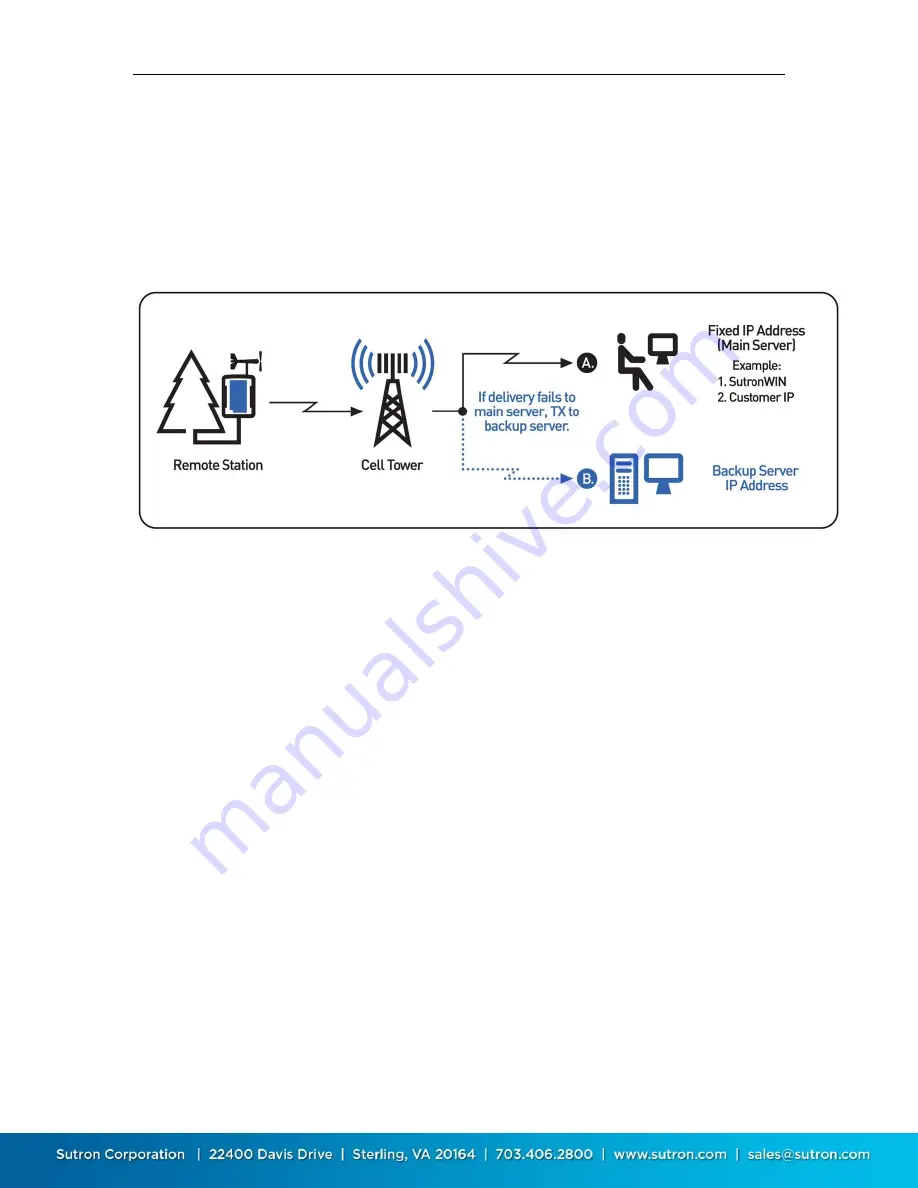
Sutron Corporation X-Link Operations & Maintenance Manual, Rev 1.63 5/24/2016 pg. 51
5.3.
Cell Phone Telemetry
GPRSLink, HSPALink, and CDMALink use the cell phone network to connect to
the internet and deliver sensor data.
The internet connection enables X-Link to get in touch with a server that will
accept the sensor data. The diagram below shows the typical usage scenario
where the station communicates to a fixed IP or IP with a backup server:
5.3.1.
Antenna Placement
GPRSLink, HSPALink, and CDMALink must be installed in places with usable cell
phone coverage. The antenna aiming feature can help determine the quality of
signal at installation time.
5.3.2.
Two-Way Communication
Whether making a transmission to a server or receiving a connection from a
client, GPRSLink, HSPALink, and CDMALink will have established a two-way
connection. Data will be transferred to and from X-Link in real time. This means
that you can use LinkComm to connect to X-Link and download the log, change
the setup, check the status, and do almost any other operation that can be done
over USB.
5.3.3.
Scheduled Transmissions
Scheduled transmissions (sometimes called self-timed transmissions) are the
most common way of reporting data. X-Link is set up with a time and interval
dictating how often to deliver data. At designated times, X-Link will power up the
modem, establish a connection to the internet, get in touch with the user setup
primary server, and deliver the data. To use scheduled transmissions, X-Link
needs to be set up with the internet address of a primary server and, optionally,
a backup server so that it knows where to deliver the data. The backup server is
contacted only if the primary server cannot be reached.
















































